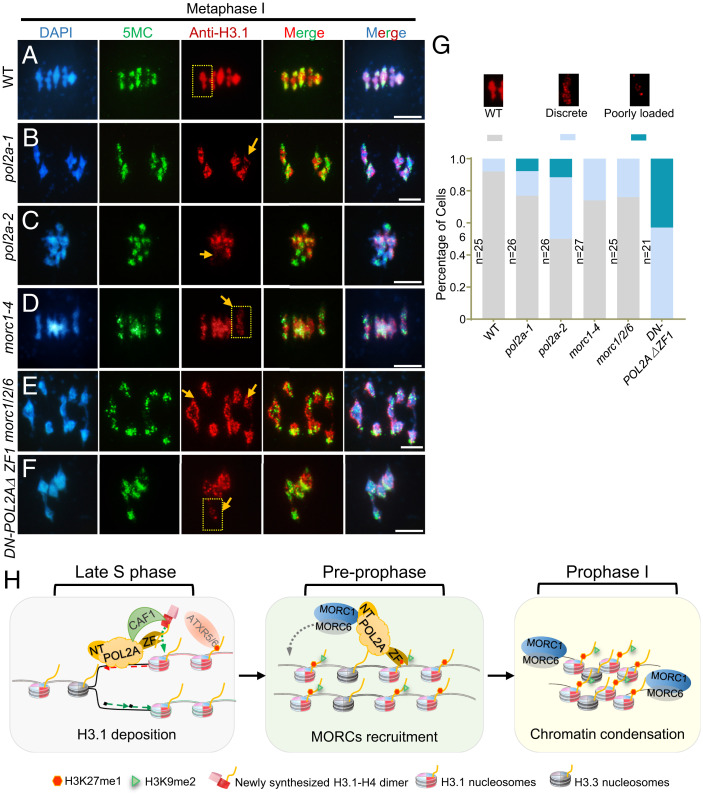Fig. 7.
POL2A is required for normal localization of H3 of heterochromatin and heterochromatin condensation in meiosis. (A–F) Immunofluorescence using anti-H3.1 at metaphase I in WT, pol2a-1, pol2a-2, morc1-4, morc1/2/6, and DN-POL2AΔZF1. 5-Methylcytosine (5MC) is used as a control to indicate the pericentromeric regions. Yellow arrows indicate bivalents with weak H3.1 signals. Scale bars, 5 μm. (G) Percentage of metaphase I cells showing poorly loaded (bivalent with only a few foci), discrete (several discontinuous foci along the length of the bivalent), and WT (bivalent with continuous signals) anti-H3.1 fluorescence in each line. The three examples above the diagram are enlarged regions of the yellow squares in A–F. (H) A proposed model showing the role of POL2A in meiotic heterochromatin establishment. At late S phase, POL2A catalyzes leading-strand DNA synthesis and may work with CAF1 complex to recruit H3.1/H4 dimers or recycling of parental histones by its ZF1. Assembly of nucleosomes that include H3.1 facilitates generation of H3.1K27me1 in heterochromatin. After S phase, at preprophase, POL2A may still associate with the chromosome by its ZF1 binding to H3.1. The POL2A N terminus interacts with MORC1/MORC6 heterodimer to mediate its association with chromatin in meiotic prophase I. MORC1/6 are responsible for condensation of chromosomes, especially on H3.1-enriched heterochromatic regions.

